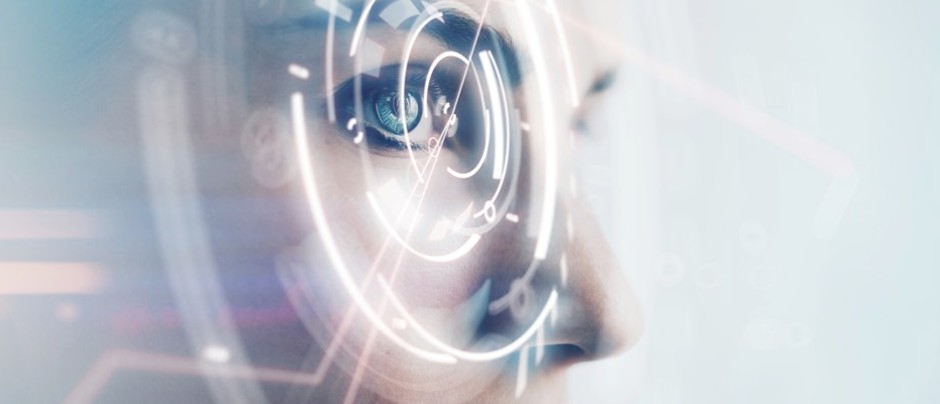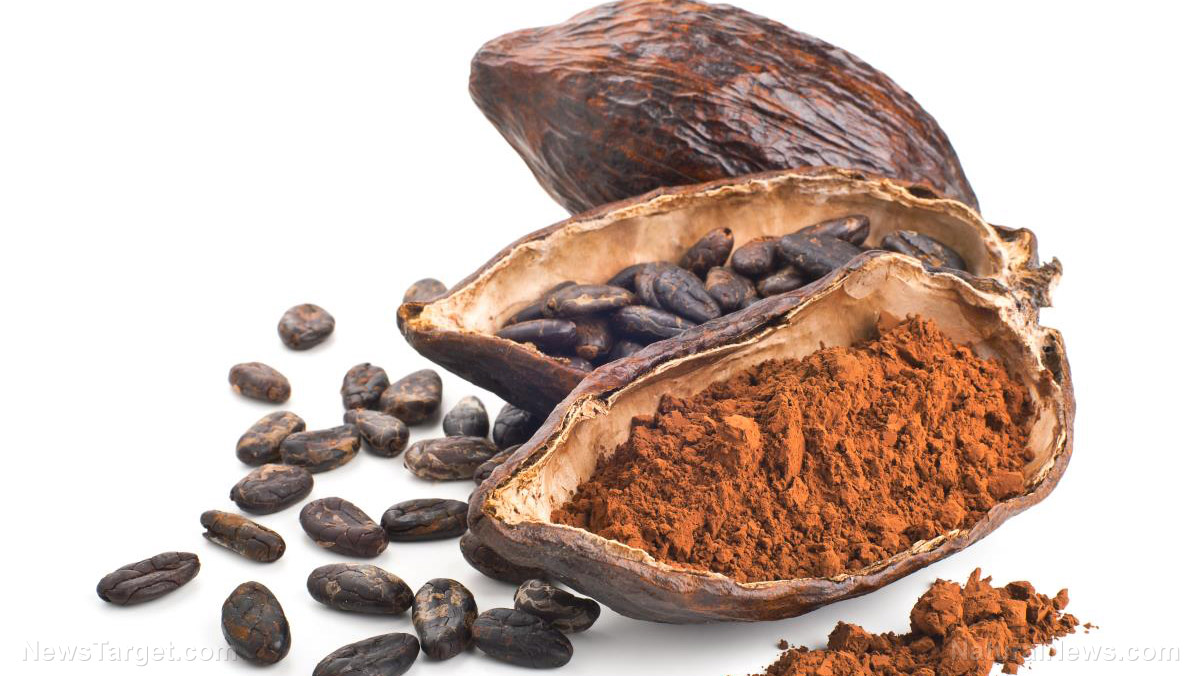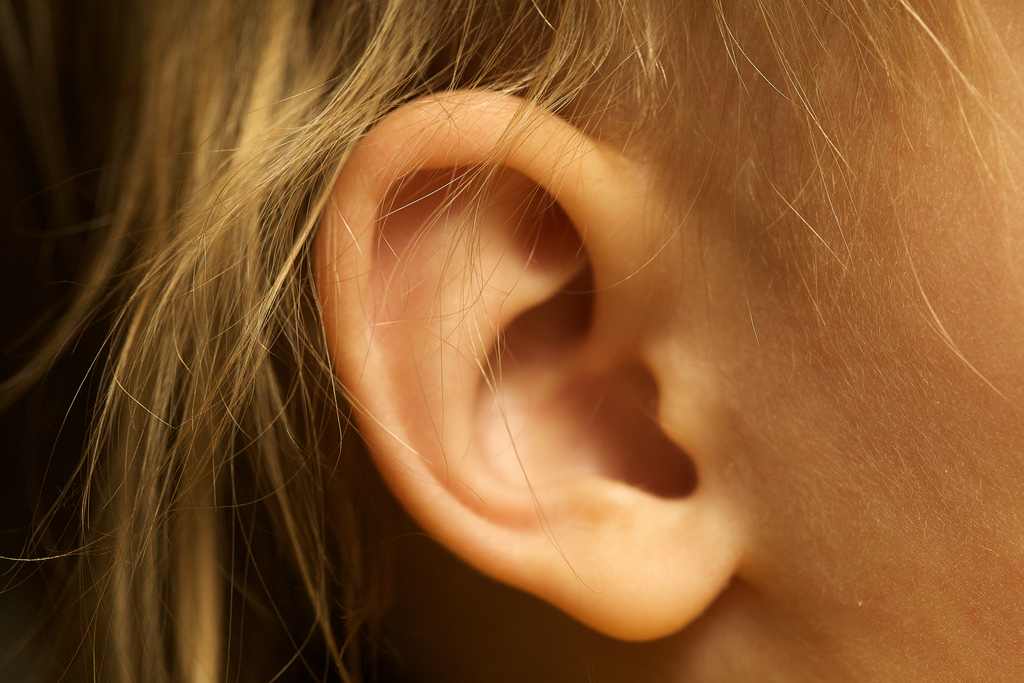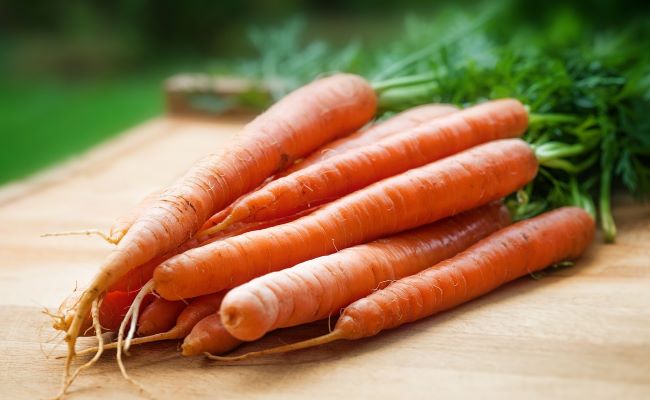Nature Knows and Psionic Success
God provides
Five key ideas you need to understand now if you want to be ready for the world of 2030

Five key ideas you need to understand now if you want to be ready for the world of 2030 © Getty Images Home of the future Just a building that keeps the rain out and your clean underwear in? Think again. The home of 2030 will be smart, connected and emotional. “Our notion of home will change drastically,” says Sce Pike, CEO of Oregon-based IOTAS. “The notion of home is no longer four walls and a roof and a place, a location, but actually something that travels with you throughout your life.” How does it do that? By learning your preferences and your habits, and automatically adjusting the light, heat, even your TV channels, before you have to ask. “It’s about how that home reacts to you and makes you comfortable,” says Pike. Read more: We will probably move house more often in 2030, from necessity and choice, but we’ll feel at home more quickly as smart technology restores our familiar surroundings and routines seamlessly. Even an overnight stay for work could pick up from where you left off, assuming your hotel or AirBnB is running the same system. Using our homes to communicate with each other will also be useful as we all get older. We want to be independent, but our families worry about us. Pike is using technology to help with that too. “We’ve set up a system where, if my parents don’t make coffee every day between a certain time window, then the home will just text me to call my Mom. It doesn’t have to tell me why, so it’s not violating their privacy in any way, but I know that something’s off.” Independence may come at the cost of somebody knowing your private business, whether it’s your family, a carer, or just the […]
Environmental factors that are known to affect memory
A variety of factors come into play when considering brain and cognitive health. Environmental factors may seem insignificant, but in reality, they play a crucial role in determining the status of one’s brain health including memory. Environmental factors can be changed, however. They can be manipulated to allow you to become healthier and thus reduce the risk that it poses on memory and cognition. Following is a list of environmental factors that are known to affect memory. Socializing: Studies suggest that an active social life plays an integral role in stabilizing memory loss in the later years of life. Maintaining strong social ties with friends, family, community groups and colleagues has been shown to improve brain health. On the other end of the spectrum, social isolation increases the risk of developing a cognitive decline in old age. Recent research carried out in the Harvard School of Public Health studied the memory status of adults over two years. The study took into account the participant’s social integration based on marital status, volunteer activities, and relations with immediate surroundings including friends, family, neighbors, etc. The results showed that the older age demographic with increased social activity revealed the slowest rate of memory decline. In contrast, participants with the least social interaction exhibited twice the rate of memory deterioration than those with high social integration scores. The study deduced that social interaction ensures mental engagement which enables the mind to stay active. Therefore, people with healthy social circles have a better quality of life. They also have a reduced incidence of developing memory related issues as compared to the individuals who spend their lives in isolation. Environmental Toxins: Exposure to environmental toxins in today’s age is becoming increasingly common and inevitable. Repeated exposure to these contaminants can increase your susceptibility to developing […]
How (properly) wasting time at work increases productivity

If you’ve ever watched a professional tennis match, you’ll know how much stamina the sport requires. From thigh slaps to squats to light jumps, players will do just about anything to maintain their high energy and laser-focus. A crucial part of the match, however, occurs in the brief pause between games: the 90-second changeover break, when players rest before switching sides. Watch closely, and you’ll see how players make the most of these precious moments: burying their heads under a towel to meditate, changing their racquets, or fueling up on water and energy drinks. Some players, like the great Serena Williams, have even sipped a quick coffee before returning to the court. Whatever their method, these pro athletes understand the value of a break. A brief reprieve can provide a fresh surge of energy and motivation for the next game. Much like a tennis match, the workday can also be a daunting mental and physical challenge, especially if you want to perform your best throughout the day. In addition to finding your optimal work hours , taking multiple breaks can increase your productivity all day long. I’ll repeat that for emphasis. Taking breaks can increase productivity. Our workaholic culture and the business epidemic tend to villainize time-wasting behaviours during work — like leisurely lunches and web browsing — but research proves that breaks can enhance your performance, on many levels. Brief periods of distraction have been shown to improve both decision-making and creativity . On the other hand, prolonged attention to a single task can actually hinder performance. Pulling an all-nighter for one assignment? Not such a good idea after all. There’s also evidence that waking periods of mental rest can improve memory formation. Apparently, during rest periods, your brain reviews and ingrains what it has previously learned. Without […]
Paradox: How Idle Time at Work Can Improve Productivity

Regular, pre-planned "microbreaks" can keep you focused and energized, and at the top of your game. Opinions expressed by Entrepreneur contributors are their own. Professional sports require incredible stamina. If you’ve ever watched a tennis match, for example, you’ve seen how athletes stay in near-constant motion to maintain their energy and laser focus. Hockey players also go all-out during their brief, on-ice shifts before returning to the bench, panting from exertion. Naturally, we focus on what happens during play, but some of the most critical moments happen off-camera, while the athletes are recovering. During the 90-second changeover break, tennis players often bury their heads under a towel to meditate, change rackets, or hydrate with water and energy drinks. Hockey players do diaphragmatic breathing to increase oxygen flow and mentally review their previous shifts. Whatever technique they use, these pro athletes understand the importance of a break. A brief pause can provide a surge of energy and renewed motivation to keep them playing their best. While most of us aren’t panting from exhaustion, the workday can still be mentally and physically challenging, especially when you’re building a business. In addition to finding your optimal work hours, taking multiple breaks can enhance your productivity all day long. Our workaholic society and the 24/7 startup culture tend to demonize “unproductive” downtime, like out-of-office lunches and web browsing, but research shows that breaks can enhance your performance on several different levels. A 2011 study from the University of Illinois at Urbana-Champaign showed that brief diversions can dramatically improve both decision-making and creativity. On the flip side, prolonged attention to a single task can hinder performance. Working until dawn to prep for an investor meeting might seem like a good idea, but it could backfire, leaving you drained and less mentally nimble to field […]
Music for space

Thomas Pesquet with saxophone in the Cupola. Credit: ESA/NASA Music has long been known to affect people’s mood. A certain tune can lift you up or bring you to tears, make you focus, relax or even run faster. Now a study is investigating how the power of music may improve human performance in one of the most stressful and alien environments we know – space. Music can help release a cocktail of hormones that have a positive effect on us: oxytocin, endorphin, serotonin and dopamine. Besides the pleasure we get from it, music can be used to prolong efficiency and reduce anxiety. Stress factors in space can lead to disrupted sleep, impaired time perception and spatial orientation. "Space appeared to me as the perfect testing ground to use anti-stress music," says violin teacher Luis Luque Álvarez, whose ‘Music for space’ project puts the psycho-physiological research of music at the service of space exploration. As a child, Luis dreamt of two things: playing violin in an orchestra and space travel. In his thirties as a talented violinist in Hungary, he noticed some videos of astronauts playing instruments in space. He started to research and learned that music is a part of the astronauts’ daily lives in space, from launch, when mission control plays music to the crews during the countdown, to orbit, where every astronaut has their own playlist to listen to in off-duty moments. Music for Space experiment. Credit: European Space Agency Could he scientifically select the best music to reduce the stress of a crew member? Press play – Experimenting with music Fast forward to the ‘Music for Space’ experiment, which ran last year at DLR’s Short Arm Human Centrifuge as part of the first Spin Your Thesis! – Human Edition . Ten volunteers rode on a centrifuge, […]
Tears hold clue to Alzheimer’s test and the potential for earliest treatment

I think we all worry about whether we’ll end up with Alzheimer’s. While genetic testing can gauge your risk, as the Alzheimer’s Association says, “Risk genes increase the likelihood of developing a disease but do not guarantee it will happen.” So, basically it still leaves you waiting and wondering. Now in a perfect world, you might choose to take everything that’s known to lessen the odds for Alzheimer’s and get to work easing your concerns. But, truth be told, like most of us, you may take the gamble and put off healthy lifestyle changes until a diagnosis is staring you in the face. But what if a simple test could reveal if Alzheimer’s earliest indicators, amyloid beta and tau plaque, were already invading your brain? A new study published in the Journal of Alzheimer’s Disease reveals researchers are on the heels of such a test — right now… Biomarkers of Alzheimer’s show up in unexpected place Researchers at Boston Medical Center knew that diagnosing and starting treatment for Alzheimer’s before symptoms began was key to managing the disease. That’s because by the time symptoms appear, it’s usually too late for current treatments to have any meaningful effect. So, they knew they needed to find a way to test for the amyloid-beta and tau plaque deposits that appear on the brain years before the earliest symptoms. Unfortunately, the diagnostic capability of brain scan technology, with the exception of a very few locations across the county, does not clearly pick up the plaque deposits on the brain. There was previous research that had shown low levels of the plaque proteins could be identified in cerebrospinal fluid (CSF) taken during lumbar puncture (spinal tap) tests. But this kind of testing is not only expensive, it’s painful and can result in CSF leaks […]
Dr Michael Mosley’s 5:2 recipes for one: Lose two stone in just three months …

Seven years ago, almost to the day, I was diagnosed with type 2 diabetes. Rather than take medication, I chose to tackle the problem myself by experimenting with my diet, says Dr Michael Mosley Seven years ago, almost to the day, I was diagnosed with type 2 diabetes. Rather than take medication, I chose to tackle the problem myself by experimenting with my diet. Extensive research told me that cutting my calories for just two days a week could have a profound effect on my health. Within a few months, I’d lost nearly a stone and a half and my blood-sugar levels were no longer considered diabetic. I coined my eating routine ‘The 5:2 diet’ and shared details of the discovery in what would become an international bestselling book. In the five years that followed, I’ve witnessed a revolution in weight-loss research that has transformed the lives of millions. Type 2 diabetes is no longer a life sentence with patients reliant on endless pills to keep them alive and well. But the benefits of eating in this way – so-called intermittent fasting – span way beyond these two (very important) things. Some scientists now believe that this kind of eating plan may play a role in reducing the risk of cancers, heart disease, depression and even dementia. Although research is still in the very early stages, I think the potential is exciting, not least because of the thousands of positive stories I’ve now heard from followers of my 5:2 diet, some of whom have been diabetes-free for a few years now. However, amid the overwhelmingly positive feedback was one common complaint. ‘But I’m only cooking for one!’ many protested. So, to coincide with the release of my latest book – The Fast 800, an updated, supercharged version of the […]
Healthy living with Wellness and Spa

Health, as defined by the World Health Organization, is a ‘complete state of physical, mental and social well-being, not merely an absence of disease.’ Thus, health does not reside merely in the physical domain, but in the mind and in the spirit as well – the holistic approach. Reconnecting body-mind-spirit, one of the objectives of taking a spa and/or wellness day out, can have a profound effect on one’s health. Scientific research says that most of the diseases human beings face are related to stress. Stress can not only affect the mental health of a person but also can damage your physical health. In the ever-changing world and with today’s ultra fast-paced lifestyle, meditation, and yoga with life coaching, is on the rise. We are in a world where there is no slowing down, and mental rejuvenation is what people need to cope with stress. As perceived, stress is reduced or removed at a wellness centre and spa, with meditation, yoga, opening up your chakras or a simple oil massage to relax the muscles, one can actually change the biochemistry of their body. Ultimately, a greater state of balance and a higher state of health can be achieved. Wellness is the hot new word in holistic approach these days. It’s the most powerful argument anyone can make against seeing spas as a mere luxury, but rather a research-backed tool that can improve your health. From the rise of ageing baby boomers to high net worth clients whose stress levels and the need for self-fulfilment have increased, spa and wellness is on the rise. Whether it’s a sweaty workout or an intense day at work that has your muscles in a knot, a wellness treatment like a massage or a trip to the sauna can sound like an alluring medicine. […]
What Foods Should Be Consumed During Dementia

Dementia disease and foods that help prevent dementia. Dementia disorder related to memory,symptoms include memory loss,limited social skills and thinking abilities.Dementia also causes change in mood and behavior.The problem of dementia occurs when the brain is damaged by a disease like Alzheimer’s or stroke chain.Generally the main cause of dementia is Alzheimer’s.People who suffer from dementia have less memory and face problems in daily tasks.Because we are dependent on our brain for all our work,people with dementia can not do their daily work properly. The memory of these individuals can be weak. They can usually have difficulty in everyday calculations and they can also feel the difficulty of working with their bank and other financial work.If there is a party at home then organizing it can be difficult for them. Sometimes they can also forget which city they are in or which year or month is going on.Problem in speaking and does not understand the correct words.Changing their behavior and personality can also change.It may also be that they use rude language or behave indecently,or be cut off from all people. Year after year,the condition of the person with dementia becomes worse and in later stages patient face many problems such as walking,talking or eating properly,chewing and ingest and depends on others.If you are experiencing serious symptoms,consult the doctor as soon as possible.However,there are some foods that help prevent dementia.These foods also provide adequate nutrients to the body and also improve the functioning of the brain. Broccoli Eating broccoli increases brain function.The broccoli has choline,which improves the memory and enhances the better cognitive abilities.To prevent dementia,increase the intake of broccoli. Berries Berries are rich sources of anthocyanin, which inhibits dementia and Alzheimer’s .In addition,there are vitamins C,E and antioxidant in the berries,which are important for better mental health.Eat blueberries,cherries […]
DR MICHAEL MOSLEY’S 5:2 recipes for one person: Lose two stone in just three months with these delicious meals by sticking to 800 calories on two fast days per week

Seven years ago, almost to the day, I was diagnosed with type 2 diabetes. Rather than take medication, I chose to tackle the problem myself by experimenting with my diet, says Dr Michael Mosley Seven years ago, almost to the day, I was diagnosed with type 2 diabetes. Rather than take medication, I chose to tackle the problem myself by experimenting with my diet, says Dr Michael Mosley Seven years ago, almost to the day, I was diagnosed with type 2 diabetes. Rather than take medication, I chose to tackle the problem myself by experimenting with my diet. Extensive research told me that cutting my calories for just two days a week could have a profound effect on my health. Within a few months, I’d lost nearly a stone and a half and my blood-sugar levels were no longer considered diabetic. I coined my eating routine ‘The 5:2 diet’ and shared details of the discovery in what would become an international bestselling book. In the five years that followed, I’ve witnessed a revolution in weight-loss research that has transformed the lives of millions. Type 2 diabetes is no longer a life sentence with patients reliant on endless pills to keep them alive and well. But the benefits of eating in this way – so-called intermittent fasting – span way beyond these two (very important) things. Some scientists now believe that this kind of eating plan may play a role in reducing the risk of cancers, heart disease, depression and even dementia. Although research is still in the very early stages, I think the potential is exciting, not least because of the thousands of positive stories I’ve now heard from followers of my 5:2 diet, some of whom have been diabetes-free for a few years now. However, amid the overwhelmingly […]
Go for the original: Cacao offers more health benefits than regular chocolate

( Natural News ) Chocolate is considered a delicious and nutritious snack, given that it is made from raw cacao, where most of its health benefits come from. Raw cacao, unlike processed cocoa powder and regular chocolate bars, is not exposed to high temperatures, which remove many of its unique health benefits. Here are more reasons why raw cacao is healthier than regular chocolate. Provides vitamins and minerals: Raw cacao is rich in magnesium, which is essential for at least 300 different bodily processes. It plays a role in regulating blood pressure, blood sugar, and nerve functioning. It is also rich in iron, which is important for supporting blood health and regulating energy levels. Iron is also important in oxygen-carrying hemoglobin and in the prevention of anemia. Moreover, raw cacao is also a great source of B vitamins, which are important for energy, and zinc , which supports the immune system. Keeps the heart healthy: Raw cacao is rich in powerful antioxidants that are good for the health, including cardiovascular health. In particular, raw cacao contains high amounts of the antioxidants called flavanols and procyanidins, which are known to reduce the risk of cardiovascular disease. Fights inflammation: The antioxidants in raw cacao fight off free radicals caused by stress, environmental toxins, and poor lifestyle habits. By fighting off free radicals, raw cacao also helps fight inflammation, warding off chronic disease. Improves mood: Whenever you’re feeling down, eat some chocolate. Chocolate can lift up your mood not only because it tastes good, but also because it releases feel-good endorphins in the body. Enhances brain function: Raw cacao also has beneficial effects on the brain. Research shows that its flavonoids can lower the risk of Alzheimer’s disease and stroke. The flavonoids in cacao have also been linked to better attention, faster […]
Carotenoids in foods more than pretty colors

Pigments in colorful fruits and vegetables called carotenoids have been found to improve the function of the human brain. (Special Photo: Georgia Health News) ATHENS — Carotenoids are plant pigments. They make tomatoes red and give carrots their distinctive orange hue. You see them when leaves change colors in the fall. But carotenoids are not just decorative. Among the roughly 600 carotenoids in nature, two in particular, lutein and zeaxanthin, have been found to improve the function of the human brain, according to researchers at the University of Georgia. “Carotenoids, in general, when we eat them, they are antioxidants, so they do a great job of keeping our bodies healthy and free of oxygenated damage,” Lisa Renzi-Hammond, one of the researchers looking at the effect of lutein and zeaxanthin, said. “They are anti-inflammatories, so we see that the more of these molecules we eat, the less inflammation we tend to have. “Our research shows that they are also changing, in many ways, the structure of the brain, and making it a more efficient organ.” Lutein is a lipid, fat-based antioxidant that the brain uses to prevent the oxidation of the fat in the brain, Billy Hammond, who is Renzi-Hammond’s research partner and husband, said. “It basically kind of links neurons together so they act more efficiently, so it helps cognition and a number of other processing things that the brain does,” Hammond said. In an experiment, Hammond and Renzi-Hammond looked at increased lutein intake in both older adults and people of college age. The study populations were given lutein and zeaxanthin supplements for a year to see how this changed their cognition. The groups taking the supplements were compared to groups taking a placebo. “We found that by improving basic functions, like helping the brain process faster, that all […]
Medication Isn’t the Only Answer for ADHD Treatment: 6 Alternatives to Consider

Looking at the ADHD treatment landscape, it can be easy to feel frustrated. Medication may be the typical ADHD treatment strategy, but ADHD medications treat the symptoms, not the root causes, of ADHD. Moreover, research shows that while ADHD medications offer a short-term academic boost, their long-term benefit is basically zero. Plus, most pharmaceutical approaches to ADHD treatment can cause side effects ranging from insomnia to heart palpitations. ADHD Treatment Alternatives Before defaulting to medication as an ADHD treatment for you or your children, talk to your doctor. Decide together whether any of the following non-pharmaceutical treatments might work: 1. Curricula that addresses ADHD’s causes Two individuals with the same ADHD symptoms might be struggling with the disorder for different reasons. For one, it could be an issue with processing auditory information. For another, it might be cognitive processing challenges. A third might simply be overly sensitive to light and sound. All three people may appear to have the same issues, but each has unique strengths and challenges stemming from separate causes. Programs that work to address sensory-motor integration and cognitive processing speed have been shown to be particularly effective for ADHD treatment. Axiom Learning, an education service founded by Harvard University alumni, uses gamified exercises as part of its LEAP 3.0 program to accelerate cognitive processing and improve sensory-motor integration. Because it’s a cause-oriented ADHD treatment, many sufferers find they no longer have the condition at the program’s end. 2. Executive function coaching Do you have trouble starting tasks or remembering important information? Is time management your Achilles’ heel? If so, your executive functioning skills might need some attention. Think of executive functioning skills as your brain’s CEO: Without an effective leader, you’ll struggle with self-management, learning, and decision-making tasks. Just like CEOs hire coaches to hone their […]
Magnesium may lead to breakthrough treatments for tinnitus sufferers

Tinnitus, which affects between 10 and 15 percent of adults, is a condition that causes sufferers to hear sounds that are not really there, including ringing, whistling, hissing or clicking sounds. It is most common in people older than 60, and affects around 50 million Americans. Tinnitus has several different causes, including long-term exposure to noise, injuries to the head or neck, ear infections, or a more serious underlying medical condition, though this is rare. There is no cure for tinnitus, and most sufferers manage to get used to the sounds over time. For some the condition is more debilitating, however, and can have a serious impact on their quality of life, interfering with work or school, affecting sleep quality and even leading to depression. A new study, funded by Action on Hearing Loss and published in The Journal of Experimental Neurology , offers new hope for tinnitus sufferers. The reason there is no treatment for the condition is that its causes are poorly understood. The new study examined some of the mechanisms causing it, as well as possible treatments . The Conversation explains , “Knowing that tinnitus is a phantom sound which does not exist in the outside world but is perceived, suggests that somewhere in the brain there are cells generating a false signal in response to a sound which does not exist.” The researchers began their investigation with the dorsal cochlear nucleus, which is a brain structure to which the inner ear sends sounds. Their premise was that continuous exposure to loud noises could compromise the ability of cells in the dorsal cochlear nucleus to boost incoming signals. The power of the elements : Discover Colloidal Silver Mouthwash with quality, natural ingredients like Sangre de Drago sap, black walnut hulls, menthol crystals and more. Zero artificial […]
Benefits of Eating Carrots

Carrots are called the ultimate health food. You must have heard from your parents and grandparents about the health benefits of carrots. If you want to keep your eyes in good condition, you must eat carrots. It also provides other health benefits that make it a superfood. It is recommended that an adult should eat at least four servings of carrot per day, either raw or cooked. You will be surprised to know that in the early ages, carrots were not orange in color. They were found in purple, red, yellow, white or even black colors. In the 16th century, red and yellow carrots were crossbred and that’s how we get the orange carrots today. Carrots contain lots of minerals, vitamins, and fiber . They also contain beta-carotene and antioxidants. They are not only nutritious but also have medicinal properties. Here are the health benefits of carrots: 1. Improves Vision Carrots are so powerful that they can help you see in the dark. It contains vitamin A and Beta-carotene that are very good for the eyes. Deficiency of vitamin A can cause Xerophthalmia, a severe eye condition that can lead to night blindness. It is also the main reason for blindness in children. Carrots are rich in Lutein that can reduce cataract. If you eat carrot regularly, you will be able to prevent eye diseases such as macular degenerations, glaucoma, and senile cataracts. 2. Prevents Cancer Carrots are rich in Carotenoids that can reduce the free radical in the body due to their antioxidant power and can prevent prostate cancer, lung cancer, colon cancer, and breast cancer. Carrots contain Falcarinol, which is a Poly-acetylene antioxidant that helps to fight against cancers. It destroys the pre-cancerous cells and so inhibits the growth of cancer. Vitamin A and Retinoic acid in […]
Citicoline Sales Driven by Supplement Demand from Geriatric Population and eSports Players: Fact.MR Study
Rockville, MD, April 05, 2019 (GLOBE NEWSWIRE) — According to a recent research by Fact.MR, the citicoline market is estimated to surpass US$ 550 million in 2019. Citicoline demand is driven by a range of factors, notably increasing geriatric population and growing use among eSports players. The study offers in-depth and incisive insights on key factors influencing the global demand for citicoline. Supplement Consumption Among eSports Players: A Lucrative Opportunity Growing popularity and increasing investments in eSports is helping the market go mainstream which, in turn, is opening an assortment of opportunities for various industries. Players participating in eSports tournaments are seeking cognitive enhancing supplements which can help them concentrate, plot strategies, and improve working memory. Additionally, a ban on the use of other nootropics such as Ritalin and Adderall in eSports leagues is creating demand for ‘permissible’ supplements. Citicoline’s negligible toxicity and its organic nature is making it an appealing prospect for eSports players. With regulations allowing the use of citicoline in functional food and supplements, manufacturers are increasingly focusing towards including the compound in their products to capitalize on the bolstering demand for cognitive-enhancing supplements in eSports. Request For Sample Report- https://www.factmr.com/connectus/sample?flag=S&rep_id=2868 Citicoline’s Role in Ischemic Stroke Treatment Creating Opportunities The adverse and often fatal impact of ischemic stroke on human health, coupled with increasing prevalence is bolstering demand for effective treatment of the condition. According to WHO, stroke is the second leading cause of death in the world and the third leading cause of disabilities in adults. Additionally, the lack of a standard procedure of treatment for different ischemic stroke patients is influencing healthcare researchers to focus on the development of acute therapy for all patients. According to Fact.MR’s study, citicoline is being viewed as a potential treatment option by researchers and healthcare providers. These factors […]
Common, Colorful And Really Good For Your Brain: UGA Researchers Study Plant Pigments

"Carotenoids, in general, when we eat them, they are antioxidants, so they do a great job of keeping our bodies healthy and free of oxygenated damage,” says Lisa Renzi-Hammond, one of the University of Georgia researchers looking at the effect of lutein and zeaxanthin. Carotenoids are plant pigments. They make tomatoes red and give carrots their distinctive orange hue. You see them when leaves change colors in the fall. But carotenoids are not just decorative. Among the roughly 600 carotenoids in nature, two in particular, lutein and zeaxanthin, have been found to improve the function of the human brain, according to researchers at the University of Georgia. “Carotenoids, in general, when we eat them, they are antioxidants, so they do a great job of keeping our bodies healthy and free of oxygenated damage,” says Lisa Renzi-Hammond, one of the researchers looking at the effect of lutein and zeaxanthin. “They are anti-inflammatories, so we see that the more of these molecules we eat, the less inflammation we tend to have,’’ she says. “Our research shows that they are also changing, in many ways, the structure of the brain, and making it a more efficient organ.” Lutein is a lipid, fat-based antioxidant that the brain uses to prevent the oxidation of the fat in the brain, says Billy Hammond, who is Renzi-Hammond’s research partner and husband. “It basically kind of links neurons together so they act more efficiently, so it helps cognition and a number of other processing things that the brain does.” In an experiment, Hammond and Renzi-Hammond looked at increased lutein intake in both older adults and people of college age. The study populations were given lutein and zeaxanthin supplements for a year to see how this changed their cognition. The groups taking the supplements were compared to groups […]
How to Increase Norepinephrine + Deficiency Symptoms

Your body has powerful systems in place to make sure norepinephrine levels remain in a healthy range – but sometimes things go wrong. Read on to learn what you can do to restore the balance and boost your levels if they drop too low. You may have just landed here from one of our previous articles on the function and effects of norepinephrine. If so, then you know that norepinephrine is a catecholamine neurotransmitter involved in the fight or flight response. If not, you may want to brush up on the basics of norepinephrine before you read on. This article is the second of a three-part series: The leading cause of norepinephrine deficiency is a genetic disorder called dopamine beta hydroxylase (DBH) deficiency. At least six variations in the DBH gene can cause this disorder, with the most common being the C allele at rs74853476 [ R , R , R ]. Dysfunctional DBH causes norepinephrine deficiency because this enzyme converts dopamine into norepinephrine . A person must have two abnormal versions of DBH to be genetically deficient in norepinephrine [ R , R , R ]. People with DBH deficiency may be prescribed droxidopa to manage their blood pressure. Droxidopa is converted to norepinephrine not by DBH, but by another enzyme called L-aromatic amino acid decarboxylase [ R ]. Symptoms of DBH Deficiency People with DBH deficiency have difficulty regulating their body temperature and blood pressure. The condition is often discovered in late childhood as symptoms develop: vomiting , dehydration , low blood pressure , and low blood sugar are common [ R ]. Low blood pressure has its own complications, among them dizziness , blurred vision , and difficulty exercising . Some people with DBH deficiency may have more severe symptoms, including [ R ]: High palate […]
Feeling frazzled? Follow these three simple steps to a sharper brain

There’s more to improving our grey matter than Sudoku. Follow our three-step guide to a better brain in a month… Our brains are a staggering feat of engineering. From the third week of gestation to old age, our grey matter is changing constantly. Its size increases fourfold before we hit school age and by age six, it has reached 90% of adult volume. On the downside, our brain reaches peak performance between 16-25, after which cognitive decline kicks in. We may find it tricky learning new skills and struggle to recall names. Before you panic, you’ll be relieved to hear that you can make proactive lifestyle changes, which will sharpen your brain in 28 days – yes, really – and could also reduce the risk of developing dementia and other cognitive impairments by 33%. All it takes is three simple steps: decluttering, de-stressing and retraining. “The brain is just like any other body part – it needs to be looked after and exercised in order to stay fit, strong and functioning effectively,” says neuroradiologist Dr Emer Macsweeney. 1. Declutter your brain Our brains can store as much information as the entire internet – mind-blowing indeed. While being informed is never bad, overstimulation can be – the brain’s ability to problem-solve decreases and neurons can be destroyed. “When we have a clearer mind we’re able to make better decisions,” says clinical hypnotherapist Fiona Lamb. “By decluttering, our mind becomes sharper – clearing the old for the new.” How? Follow these steps… Do a digital detox “Endless calls and notifications are addictive,” says life coach Carole Ann Rice. Take time away from your phone – read, go for a walk or meet a friend – and avoid taking it into the bedroom. Download the space app, £1.99 (iTunes), too. It encourages […]
Citicoline Sales Driven by Supplement Demand from Geriatric Population and eSports Players: Fact.MR Study
Rockville, MD, April 05, 2019 (GLOBE NEWSWIRE) — According to a recent research by Fact.MR, the citicoline market is estimated to surpass US$ 550 million in 2019. Citicoline demand is driven by a range of factors, notably increasing geriatric population and growing use among eSports players. The study offers in-depth and incisive insights on key factors influencing the global demand for citicoline. Supplement Consumption Among eSports Players: A Lucrative Opportunity Growing popularity and increasing investments in eSports is helping the market go mainstream which, in turn, is opening an assortment of opportunities for various industries. Players participating in eSports tournaments are seeking cognitive enhancing supplements which can help them concentrate, plot strategies, and improve working memory. Additionally, a ban on the use of other nootropics such as Ritalin and Adderall in eSports leagues is creating demand for ‘permissible’ supplements. Citicoline’s negligible toxicity and its organic nature is making it an appealing prospect for eSports players. With regulations allowing the use of citicoline in functional food and supplements, manufacturers are increasingly focusing towards including the compound in their products to capitalize on the bolstering demand for cognitive-enhancing supplements in eSports. Request For Sample Report- https://www.factmr.com/connectus/sample?flag=S&rep_id=2868 Citicoline’s Role in Ischemic Stroke Treatment Creating Opportunities The adverse and often fatal impact of ischemic stroke on human health, coupled with increasing prevalence is bolstering demand for effective treatment of the condition. According to WHO, stroke is the second leading cause of death in the world and the third leading cause of disabilities in adults. Additionally, the lack of a standard procedure of treatment for different ischemic stroke patients is influencing healthcare researchers to focus on the development of acute therapy for all patients. According to Fact.MR’s study, citicoline is being viewed as a potential treatment option by researchers and healthcare providers. These factors […]
